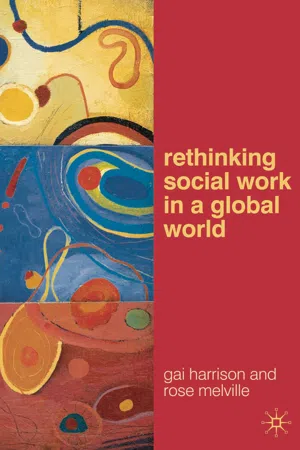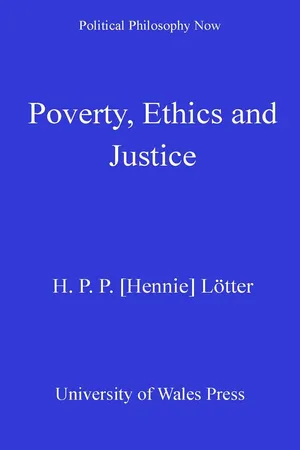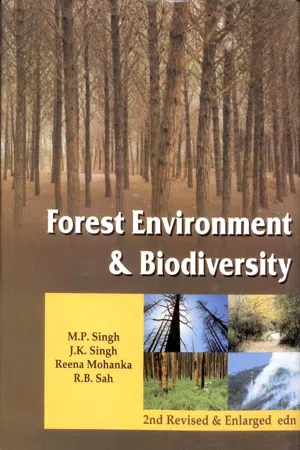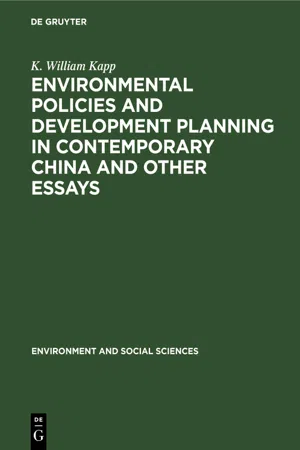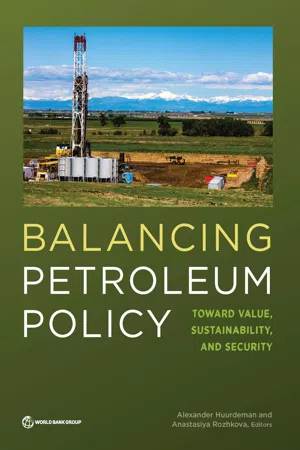Social Sciences
Environmental Impacts of Development
Environmental impacts of development refer to the effects that human activities, such as urbanization, industrialization, and infrastructure construction, have on the natural environment. These impacts can include habitat destruction, pollution, deforestation, and loss of biodiversity. Understanding and mitigating these impacts is crucial for sustainable development and the preservation of ecosystems and natural resources.
Written by Perlego with AI-assistance
Related key terms
1 of 5
5 Key excerpts on "Environmental Impacts of Development"
- eBook - PDF
- Gai Harrison, Rose Melville(Authors)
- 2009(Publication Date)
- Bloomsbury Academic(Publisher)
134 Rethinking Social Work in a Global World Development, 1987, p. 43). The relationship between economic develop-ment and environmental quality is central to sustainable development, along with a commitment to social equity. Sustainable development is concerned with balancing the economic and sociocultural needs of people with the regenerative capacity of the natural environment. In this sense, it represents a philosophy as well as a social movement (Hoff, 1997, p. 35). It implies an ethical responsibility to be ‘future orientated’ rather than giving priority to one’s immediate needs and wants. Several writers in social work make a case for social workers’ active involvement in the movement towards sustainable development because it is consistent with the profession’s holistic ‘person-in-environment’ approach (Coates, 2003; Healy, 2001, pp. 275–6; Hoff, 1997; Marlow and Van Rooyen, 2001). The environment in this case also refers to soil, air and water, and maintaining a healthy environment requires recogniz-ing the importance of the principles of interdependence and biodiversity. Sustainable development equally involves recognizing people’s subsistence rights: the right to food, health, housing and a livelihood. In this regard, environmental justice is interconnected with sustainable development. It is the more affluent economies in the global North who carry most responsi-bility for overtaxing natural ecosystems, which in turn has threatened the ability of poorer people to make a living from their natural spaces. In line with principles of environmental justice, these economies must then curb economic growth and prioritize global subsistence rights over the pursuit of affluence (Sachs, 2004). Both social and political adaptability are required for sustainable devel-opment. - eBook - PDF
- Hennie Lötter(Author)
- 2011(Publication Date)
- University of Wales Press(Publisher)
5 • Poverty’s Impact on Human Environments 1 At the dawn of the twenty-first century, people throughout the world are more conscious than ever before of the fragility of our planet and the ecosystems on which we depend for our livelihoods. More human beings attach value to a sound environment than ever before, as we and our children need the environment for our survival, health, recreation and general well-being. No human being can escape the deep environmental interdependency we share with human beings elsewhere in the world, as even some of the most local forms of environmental degradation can have global impact, if added to the billions of similar small events that occur every day. In addition, the impact human beings have on one another and the influence our artificially constructed environments have on our develop-ment are well known. In diverse ways our growth and development can be obstructed, skewed or even derailed if the human company we have or the physical circumstances of our built environment have negative impacts on us. In the light of a deep concern for the environmental well-being of our planet and for the deep significance of social environments for human development, we have to look at the impact of poverty on the human environments we live in. A definition of ‘environment’ The highly influential World Commission on Environment and Develop-ment, chaired by Gro Harlem Brundtland, sets up a starkly simple argument about the relationship between human development and the environment. The report gives the following definitions of the two concepts (Brundtland, 1987: 3). It defines the environment as ‘where we all live’ and development as ‘what we all do in attempting to improve our lot within that abode’. Can these definitions be so simple? In a sense, yes, if one acknowledges the complexities behind these deceptively simple definitions. - Singh, M P(Authors)
- 2021(Publication Date)
- Daya Publishing House(Publisher)
Chapter 19 Introduction to Environmental Impact Assessment Introduction Concern for environmental quality is a recent phenomenon. The two major criteria i.e., the project should maximise economic return, and it should be technically feasible, are no longer considered adequate to decide the desirability or even the viability of the project. It is now widely recognized that the development effort frequently produces not only sought for benefits, but other often unanticipated undersirable consequences as well which may nullify the socio-economic benefits for which the project is designed. The objective of environmental impact assessment is to achieve sustained development with ( a ) minimal environmental degradation, and ( b ) prevention of long term environmental adverse effects by incorporating suitable mitigative measures. Environmental impact assessment process, therefore, involves evaluation of environmental implications and incorporation of necessary safeguards for those activities having a bearing on environmental quality. Evaluation of the beneficial and adverse effects of development projects on the eco-system is attempted, both qualitatively as well as quantitatively. Impact assessment is a concept that evolved in the search for ways to render development and protection of the environment compatible in the complex and interdependent world of today. The speed, scale and character of contemporary technological and economic development, which has permitted material standards of living to reach high levels has also led to This ebook is exclusively for this university only. Cannot be resold/distributed. unforeseen effects on the very environmental assets that constitute the basis for sustained socio-economic development. It is becoming clear that air, water and soil must, of necessity be treated as precious natural resources requiring careful management. Simple cures for pollution problems are not longer sufficient.- K. William Kapp(Author)
- 2020(Publication Date)
- De Gruyter(Publisher)
Human action, including public decision-making, takes place within, and has repercussions on our natural-physical environ-ment which has its own ecological structure and is subject to specific laws. 5 If these structures and regularities are left out of account, either due to ignorance or deliberately, the outcome of any decision may differ from one's intended objectives or, even if the original goal is attained, there may be additional effects of a negative character. Viewed in this way, the disruption of the environment can be interpreted as the outcome of human action which, while apparently rational within a given institutionalized 4. 'According to some estimates in some fields, and with respect to some kinds of discharge, industrial wastes exceed by a multiple the discharge by all municipalities, quite apart from the fact that industrial plants discharge vastly different amounts of waste.' A. V. Rneese, 'Research goals and progress towards them', in: H. J arret (ed.), Environmental quality in a growing economy, Baltimore, Md., 1966, p. 79. 5. The same applies pari passu to the disruption of the social environment. 62 Environmental disruption: Challenge to social science framework of socio-economic and legal relations, nevertheless gives rise to a particularly destructive (social) irrationality because its repercussions on the physical, biological, psychological and social environment are ignored or neglected. The result is an inefficient use of economic means and resources in the sense that socially more important values and objectives are sacrificed and remain unsatisfied in favor of less important ones. More specifically, formerly 'free' goods like clean air and water have become scarce. More-over, by shifting the costs of environmental disruption to third persons or to society, we add to the distortion of an already imperfect market and price structure and of the distribution process.- eBook - PDF
Balancing Petroleum Policy
Toward Value, Sustainability, and Security
- Alexander Huurdeman, Anastasiya Rozhkova(Authors)
- 2019(Publication Date)
- World Bank(Publisher)
Strategic environmental and social assessments (SESAs), typically conducted at a national or regional level, are vital exercises that can proactively inform and optimize the opportunities afforded by developing the oil and gas sector, thereby laying the foundation for broad, sustainable, and inclusive development; peace; and state-building in fragile states. At the individual project level, the process of conducting an environmental and social impact assessment (ESIA) is instru-mental in mitigating the potential negative impacts of a proposed oil and gas project, enhancing the positive outcomes, and contributing to the effective and efficient environmental and social management of the project. This chapter will examine the typical components and recommended processes of both SESAs and ESIAs in more detail, but first, it will review the footprint that hydrocarbon development can have on both the environment and the social landscape. Typical Environmental and Social Impacts of Oil and Gas Development Individual oil and gas sector projects at various phases of the development cycle, and the synergistic or cumulative effects of such development, can cause direct and indirect, positive or negative changes to the physical and sociocultural land-scape in which they take place. If these projects have adverse effects, they can increase a country’s fragility by contributing to tensions between different stake-holders and levels of government. There have been significant technological advances in the oil and gas industry in recent decades, and best practices for alle-viating negative social impacts have emerged. However, there is still a great deal of variation in the standards, including environmental and social ones, applied to similar activities and stages of exploration and development depending on the implementing company and the requirements of host governments.
Index pages curate the most relevant extracts from our library of academic textbooks. They’ve been created using an in-house natural language model (NLM), each adding context and meaning to key research topics.
